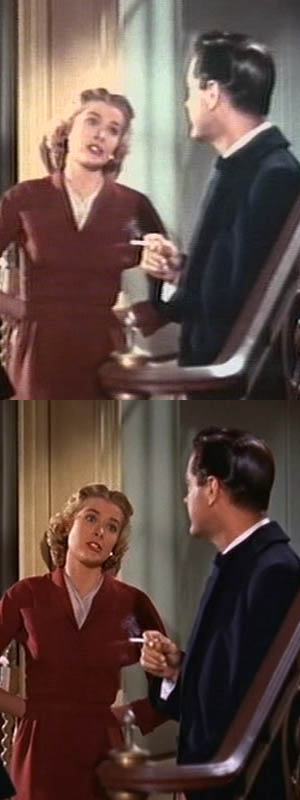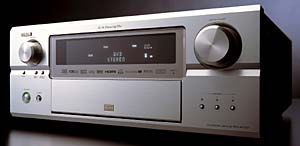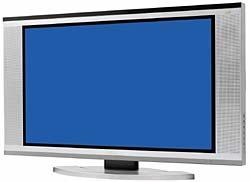I had a chat with one of my editors yesterday about a piece I’d done on high definition video, in which I hadn’t mentioned 1080p. In Australia, the legislated high definition TV standards are 576p, 720p and 1080i. The ‘p’ stands for progressive scan and ‘i’ for interlaced. It seems that over in the United States, the industry is very excited about 1080p-capable displays.
Why?
Well, it has to do with Blu-ray. Amongst the video outputs permitted in the Blu-ray specification is, in fact, 1080p. But that bald tag doesn’t convey the whole story. Sending 1080p down a wire at 50 or 60 hertz offers no advantage over 1080i with film sourced material, and demands double the bandwidth, making higher demands on cabling. Oh, sure, for 60 hertz systems 1080p eliminates the need for the 3:2 pulldown that afflicts NTSC systems, but still leaves problems with the film cadence (to turn the 24 frames per second of film into 60 frames per second means that twelve of the original frames will be shown twice, and twelve will be shown three times, potentially producing a slight jerkiness).
In fact, the 1080p standard to be offered by Blu-ray isn’t at 50 or 60 frames per second, but 24. You can see the advantage of this. First, the bandwidth is reduced. So much that it is actually slightly below 1080i at 50 hertz. Second, and more importantly, this precisely matches the original film speed. In 60 hertz countries, that means no need for 3:2 pulldown, nor any cadence issues. What you get at home with your 1080p picture is precisely what was shown at the cinema.
That’s for 60 hertz countries. But how about here in Australia, and in Europe, and other 50 hertz nations. I see a problem for us. PAL turns 24 frames per second of film into 50 fields (each field is half a frame) per second by the far simpler technique of simply speeding everything up slightly. When you watch a film-sourced DVD in PAL, it runs at 25 frames per second, so the movie is four per cent shorter. This is not discernible to most people and generally doesn’t worry me. But it does have one other implication: the pitch of the sound is four per cent higher.
It need not be. With modern digital processing, the audio can be speeded up with the original pitch maintained, but one way or the other, the sound is coming through faster in 50 hertz nations than in 60 hertz ones.
So what has this to do with 1080p? Well, for backwards compatibility with existing equipment, Blu-ray players sold here will have to support the various 50 hertz display standards: 576i, 576p, 720p and 1080i. That means the audio will have to be synchronised to the faster PAL-like playback rate. If the output is set to 1080p at 24 hertz, though, the audio won’t match the picture.
There are ways around this:
- The Blu-ray disc could have two audio tracks: one set for 50 hertz playback and the other for 24 frames per second. The player could automatically select the appropriate one according to the display settings.
- The Blu-ray player could do an automatic audio conversion on the fly. This would require some considerable processing grunt with an expensive DSP and a decision would have to be made as to which audio would be held on the disc. You could have the PAL-suitable, speeded-up, audio and convert it back to the original in the player, or the other way around. I’d prefer the latter since that truly is the original audio.
- The 1080p standard in nations like Australia could be set not to 24 frames per second, but 25. That means that there will be effectively no advantage for 1080p over 1080i.
My guess: the last option will be implemented. But I hope I’m wrong.

 The combination of digital TV and DVD recorders can, unlike VCRs and analogue TV, make it worthwhile to record broadcasts for permanent retention. In general, purchasing the DVD of a movie or a TV show is better, quality-wise, but not always. For one thing, there are thousands of movies that are not available on DVD, and may never be. For another, there may be constraints on a DVD that make it something you’re not particularly keen on.
The combination of digital TV and DVD recorders can, unlike VCRs and analogue TV, make it worthwhile to record broadcasts for permanent retention. In general, purchasing the DVD of a movie or a TV show is better, quality-wise, but not always. For one thing, there are thousands of movies that are not available on DVD, and may never be. For another, there may be constraints on a DVD that make it something you’re not particularly keen on. Denon’s $13,000 AVC-A1XV home theatre amplifier is overkill, with its ten channels of amplification and 45 kilograms of mass. Now Denon has introduced the much more affordable ($6,999) and lighter (23kg) AVC-A11XV, with seven channels, each rated at 140 watts. It has everything in the way of features, including
Denon’s $13,000 AVC-A1XV home theatre amplifier is overkill, with its ten channels of amplification and 45 kilograms of mass. Now Denon has introduced the much more affordable ($6,999) and lighter (23kg) AVC-A11XV, with seven channels, each rated at 140 watts. It has everything in the way of features, including  I’ve just received a press release from NEC Australia saying that the selling price of its 40 inch (100cm) widescreen LCD TV, the
I’ve just received a press release from NEC Australia saying that the selling price of its 40 inch (100cm) widescreen LCD TV, the